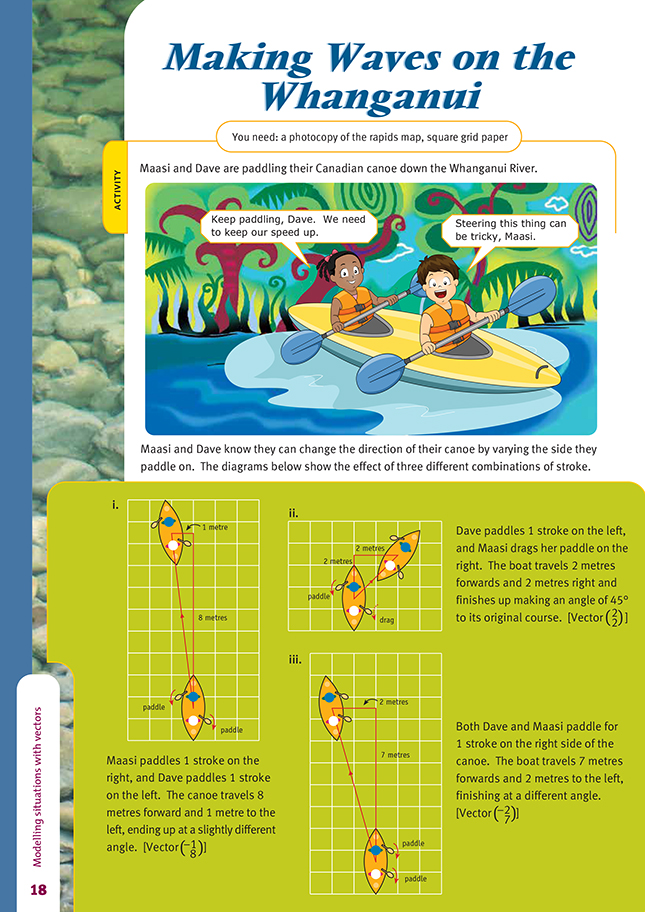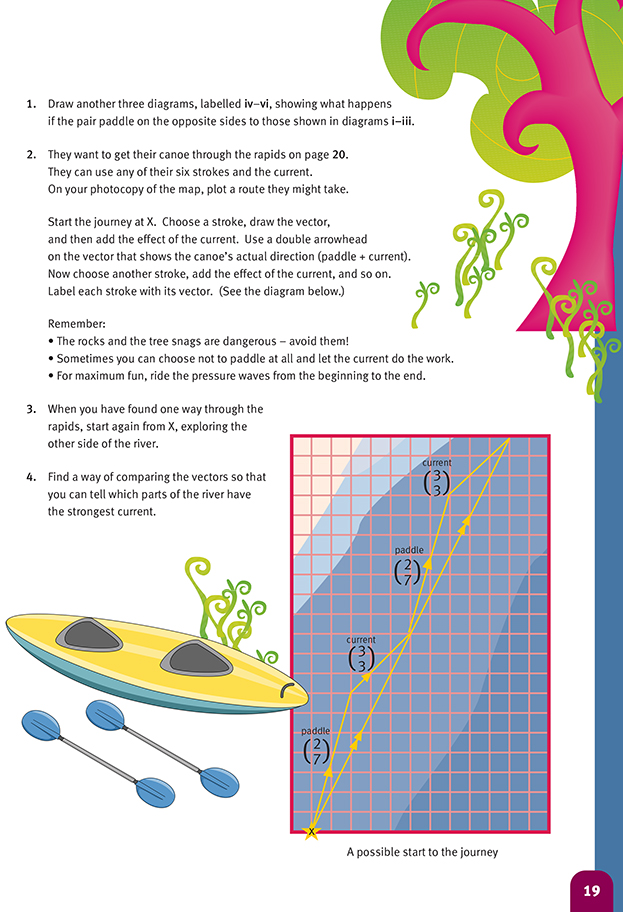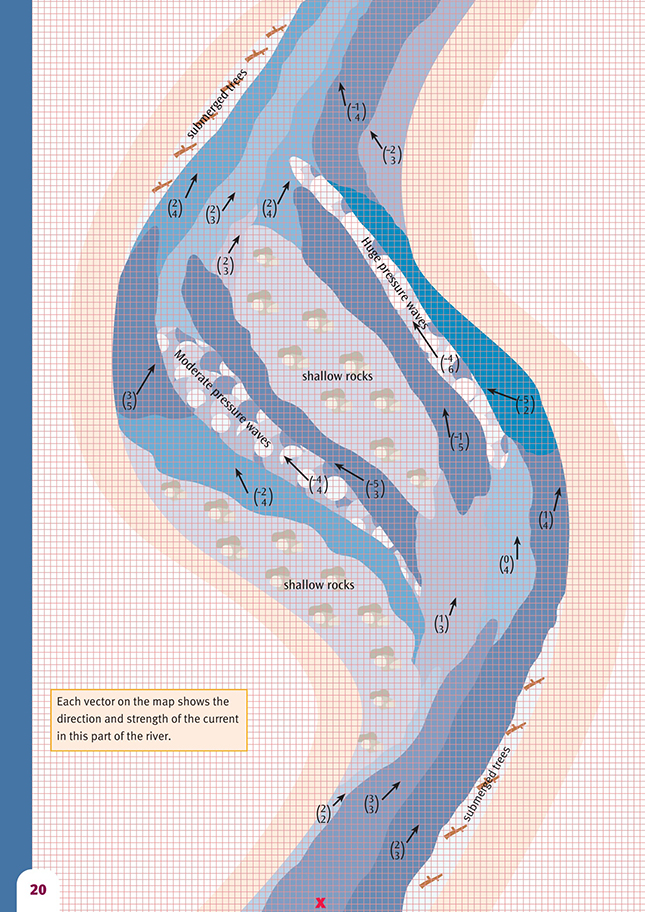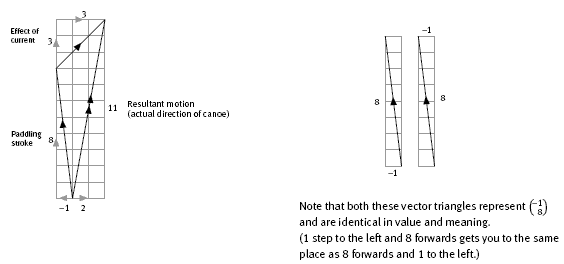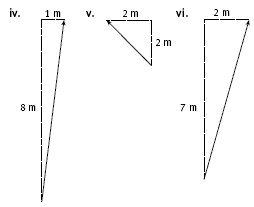This is a level 5 geometry activity from the Figure It Out theme series.
Click on the image to enlarge it. Click again to close. Download PDF (485 KB)
draw vectors
add vectors
FIO, Levels 4-4+, Theme: Getting Around, Making Waves on the Whanganui, pages 18-19
Copymaster of the Rapids Map
Square grid paper
(For an introductory discussion of vectors, please refer to the teachers’ notes for Oil Spills in Disasters Strike! Figure It Out, Years 7–8.)
Question 2 requires the students to add vectors together in order to find the resultant vector. In simple terms, if Maasi and Dave paddle the boat, they will travel along a line defined by their paddling vector. Suppose that the stroke they decide on is stroke i, Maasi right and Dave left. The vector defining their motion is.
However, the flow of the river will influence the motion of the boat as well. If Maasi and Dave shipped their oars (and did not paddle at all), the river current would be the only influence upon the boat. This motion is defined by the vector . Combining the force of the stroke and the current, we would have paddling + current = resultant motion. In vector terms, this would be
. So the movement of the boat can be defined by the single vector
.
Resultant Motion of the Boat
To find a safe course through the river, the students need to start at point X, decide on a stroke Maasi and Dave should use, and then combine this with the current vector at that point to determine where the boat will be before applying the next stroke. For example, starting at X, if Maasi and Dave both paddle once on
the left, the motion will be stroke + current = . So, from X, the new position of the boat is found by moving 5 blocks to the right and then up 10. We notice that, at this point in the river, the vector describing the current is again
![]() . Choosing the same stroke again, the movement of the boat is
. Choosing the same stroke again, the movement of the boat is
stroke + current = , which is
. Plotting this movement, 5 across and 10 up, places us just 4 units away from the shallow rocks. We need to move further to the right with as little forward movement as possible and very quickly. Our best stroke for this is for Dave to left paddle and Maasi to right drag. The movement is then stroke + current =
, which is
Continuing in this way, making corrections to the choice of stroke where obstacles are encountered, we will find a safe course through the river. There are, of course, many possible vector routes that will get Maasi and Dave safely through the rapids.
Question 4 challenges the students to work out how to use vectors to determine the strength of the current. To do this, they need to compare the length (magnitude) of the vectors. If two vectors have the same length, they represent the same speed. All these vectors have exactly the same magnitude:
The standard method for finding the length of a vector is to use Pythagoras’ theorem, which squares each component of a vector, adds these figures, and then finds the square root. However, the students can easily compare vectors by simply squaring and adding the two components (numbers) together. The bigger the result, the greater the magnitude.
Answers to Activities
1.
(Explanations for each diagram are:
iv. Maasi paddles 1 stroke on the left, and Dave paddles 1 stroke on the right.
v. Dave paddles 1 stroke on the right, and Maasi drags her paddle on the left.
vi. Both Maasi and Dave paddle 1 stroke on the left side of the canoe.)
2. Answers will vary. There are many possibilities.
A diagram for a route that works is shown on the following page.
3. Answers will vary. There are many possibilities.
4. Square each of the two parts of the vector and add them together. The bigger the sum of the squares, the faster the current. For example, the current with
the vector is faster than the current with the vector
because (–2)2 + 52 = 29, which is greater than 32 + 42 = 25.
